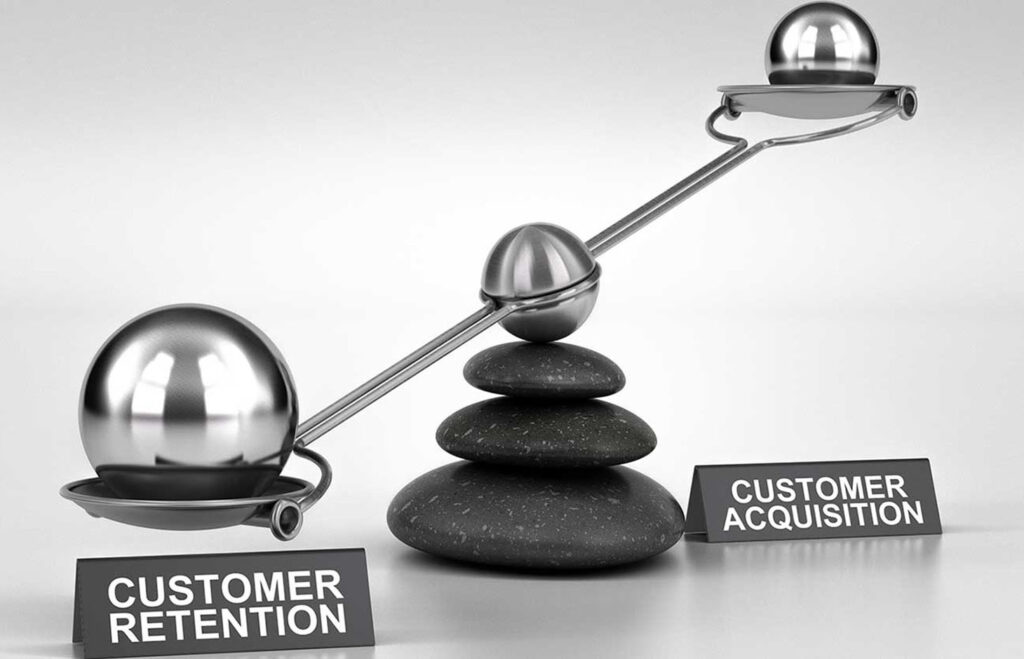You’ve just landed a new customer. While your product has only been adopted by one team within the large organization so far, you’re hopeful you’ll be able to expand—maybe even to company-wide adoption.
What comes next is clear, isn’t it?
If you answered, “don’t even try to actively upsell until you’ve established weeks or even months of outstanding trust and service,” you grasp the principles of a good land and expand business strategy.
Whether you’re conscious of it or not, ‘land and expand’ is a process that takes place naturally throughout your relationships with your customers. It’s not unusual for 70% of a B2B business’s revenue to come from 20% of its customers thanks to upsells and other expansion techniques.
When a customer likes what you have to offer, they’ll often go in for more.
By working to expand certain accounts to their fullest potential, you not only compound your monthly recurring revenue, but you also help your customers make the most of your offerings by connecting them with solutions they actually need.
Land customers that will grow with your product
On24 is a video teleconference service that’s been around for over twenty years. Seasoned, to be sure, and as its 2020 annual recurring revenue (ARR) reports revealed, it’s more robust than ever.
While the world turned to free platforms like Zoom in 2020, On24—a business that nets an average of $100,000 from each of its 1,900 customers—brought in a cool $200 million in AR.
One of the keys to On24’s success is it isn’t afraid to start small with new accounts.
The ‘land’ element of a ‘land and expand’ business strategy requires only that you start a relationship with a customer. The process could look something like this:
- Make contact. This could mean making a small sale. It could even mean setting up a free trial. Free trials that require a credit card at sign-up have a conversion rate of between 26-30%, making them a dependable way to establish connections.
- Delight the customer. Good customer service is even more important than many businesses realize. Approximately 92% of consumers will churn out after just a few bad experiences—a stat that’s lethal not just to a ‘land and expand’ strategy, but your business as a whole. After signing on a customer, make sure they’re equally pleased with the product and the support you provide.
- Establish a closer relationship. Once you’ve made a connection, it’s time to solidify your relationship. This could mean assigning a customer success agent to continually monitor your customer’s product satisfaction. Not only will this increase your customer’s satisfaction, but it will also lay the groundwork for expansion. Businesses are 14X more likely to find success selling to a current happy customer.
Expand your customer satisfaction and your monthly recurring revenue
Now that you’ve established a rock-solid relationship with your customer, it’s time to expand the use of your product within their business. Here’s how On24 explained its expansion strategy.
“After establishing a customer relationship with a business unit of an Enterprise, we seek to expand to new business units, divisions, departments, and geographic regions, as well as increase subscriptions to additional products, which we refer to as “attachments,” and expand product use cases.”
Some business, such as Atlassian, Basecamp and Slack, even used the land and expand strategy to scale to $100 million ARR—and all without sales teams to boot!
It’s a proven approach that can work very well in the world of SaaS.
So, now comes the time where you leverage the relationships you’ve built with your customers. Here’s an example of a good expansion-based strategy.
- Identify new opportunities. If your product worked well for one user, team, or department within a customer’s business, chances are it could work well for more. Now that the customer knows the value and benefits of your product, it’s time to point out how those benefits can be experienced more broadly. If you’re lucky, your customer might even make this leap all on their own.
- Find gaps in service. If the customer isn’t using all of your available features, you may find success pointing out new products or services for them to try. Business needs are continually evolving, which means some features that were of no use to your customer before may now be invaluable.
The probability of successfully selling to an existing customer is about 70% but now that you have a solid track record with the customer, your chances could be even higher.
- Secure less churn and longer LTV. As your product becomes increasingly essential to the customer’s day-to-day operations, use your developed relationship to secure a longer-term arrangement next time subscription renewal comes around—or maybe even sooner. Not only does this improve your MRR predictability and LTV, but it can also reduce your churn rate.
Stats show the average churn rate on contracts that are less than a year is over 16%, whereas on contracts that are 2.5 years or longer churn drops to about 8.5%.
The ultimate goal is to maximize the value of your product for your customer.
Not only does this strategy produce higher and more predictable monthly recurring revenue, but it also contributes to a mutually beneficial, long-term relationship between you and your customers.
Land and expand is about more than adding expansion MRR
Not every customer can feasibly be turned into a whale. ‘Expand’ only works when the customer can actually benefit from expansion.
So while successful upselling will of course improve your business’s monthly recurring revenue, a business-wide dedication to customer service as part of a greater land and expand strategy will also serve to protect that revenue.
Most customers prefer to grow with their software, not rip and replace it on the regular. Combine a great product with great attention to their needs and they won’t have any reason to.
Expansion is great, but retention is the foundation.







